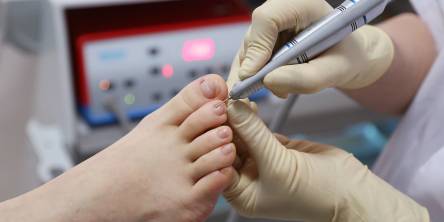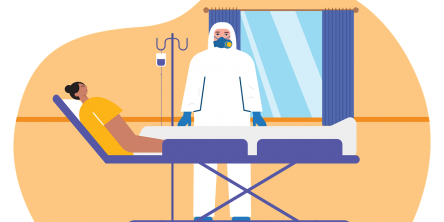What Is The Role of A Pain Management Center

When a general practitioner has done all they can for their patient’s chronic pain, they will turn for help from a pain management center. Here the patient will have access to a staff of several types of professionals that will help address their pain and find the best pain management treatment for them. This is a common practice for patients with musculoskeletal and spine pain that isn’t determined to be from any specific source, such as an auto accident or cancer.
At the center, the patient will be treated with procedures and techniques to manage their pain that a general practitioner may not have access to or training to, which may include surgery. The process the staff at the center will include the following:
- Identify the source of the pain
- Review the possibility of an aggressive nonsurgical approach
- If surgery is determined necessary, they determine the area that needs surgery
- They will provide the patient assistance with recovery after surgery
- They will provide the patient rehabilitation after surgery
A pain management center will use a large variety of techniques in addressing a patient’s pain and the disease, disorder or illness causing the pain. Here, a scientific basis is used for these approaches which will range from procedures or therapy that are without experimental support to the procedures and therapy that have demonstrated effectiveness in clinical trials.
Pain Management with Noninvasive Pharmacologic Treatment
Pain management center will first have the patient try OTC pain relievers and other related drugs. Some of the common treatments of noninvasive pharmacologic for chronic back pain are:
- Analgesics – Along with pain medications this also includes acetaminophen. The downside to this is that the kidney and liver are at risk with long-term use.
- NSAIDs (Nonsteroidal anti-inflammatory agents) – This includes OTC products such as aspirin, COX-2 inhibitors, ibuprofen, and naproxen. These put a patient at risk of gastrointestinal ulcers and heart attack with long-term use.
- Muscle Relaxers – These are used as a treatment for muscle spasms that are caused from pain and protective mechanisms.
- Narcotic Medications – These are prescribed for patients with acute or for post-operative pain. Because they can become addictive, the staff at a pain management center will supervise a patient closely and limit any refills of the prescriptions. Because they are prescribed for acute pain and not chronic pain, the prescription refills are limited if any.
- Antidepressants or Anticonvulsants – These are used for treating neuropathic pain.
- Neuromodulating Medications – These are used for treating muscular and neuropathic pain.
If these pharmacologic treatments do not work for a patient, the staff at the center will then bring a staff surgeon in for a consultation. They may also bring in other members of the center to evaluate the patient’s condition and history as well.
Other members of the staff may include one or more of the following specialists:
- General Medical Doctor (in addition to working with patient’s original MD)
- Neurologist
- Neurosurgeon
- Oncologists
- Psychologist
- Physical Therapist
- Rheumatologist
There may be other specialists on staff at the pain management center that will be included in a patient’s case. Specialists that are not on staff may be called upon for consultation as well. This is the benefit of being admitted to a facility like this: Having multiple specialists on hand for consultation and inclusion in a patient’s case. It is somewhat like an ‘a la carte’ of assorted specialist to choose from.
Once a patient has started showing signs of recovery, each specialist will sign off on their part. Some of them may recommend ongoing care for a while longer or a follow up appointment in three, six, or twelve months, perhaps longer.
Similar Articles
The landscape of medicine is continually evolving, driven by groundbreaking research and innovative discoveries. This article takes you on a journey through the latest research frontiers in medicine, exploring cutting-edge advancements that hold the promise of transforming healthcare and improving outcomes for patients worldwide.
If you work hard and feel that your life could be healthier, you have come to the right place, as we take an in-depth look at ways that you can make your lifestyle a bit healthier.
Uncover the top foot issues managed by podiatrists. Explore prevalent conditions and effective treatment approaches for optimal foot health.
Discover how prescription lens replacement can give your eyewear a fresh new look and improved vision. Upgrade today for a clearer perspective!
Discover the path to a healthier future with Mediterranean diet meal plans. Unlock vitality and wellness through delicious, balanced nutrition
Ever felt parched after a long workout, a night out, or a bout of illness? While plain water is always the best first line of defense, sometimes your body needs more. Enter IV hydration, a growing trend in the wellness world that promises rapid hydration and a range of potential benefits. But is it all it's cracked up to be?
Learn about the advantages associated with employee communication platforms, their most common uses, and how they are changing the healthcare industry right now.
Discover how wearable health tech empowers seniors. Take control of wellness with insights, trends, and innovation in senior care technology.
Back injuries and other spinal problems can induce a variety of symptoms, including some you might not expect. If they go together with the back pain, they may be connected.









